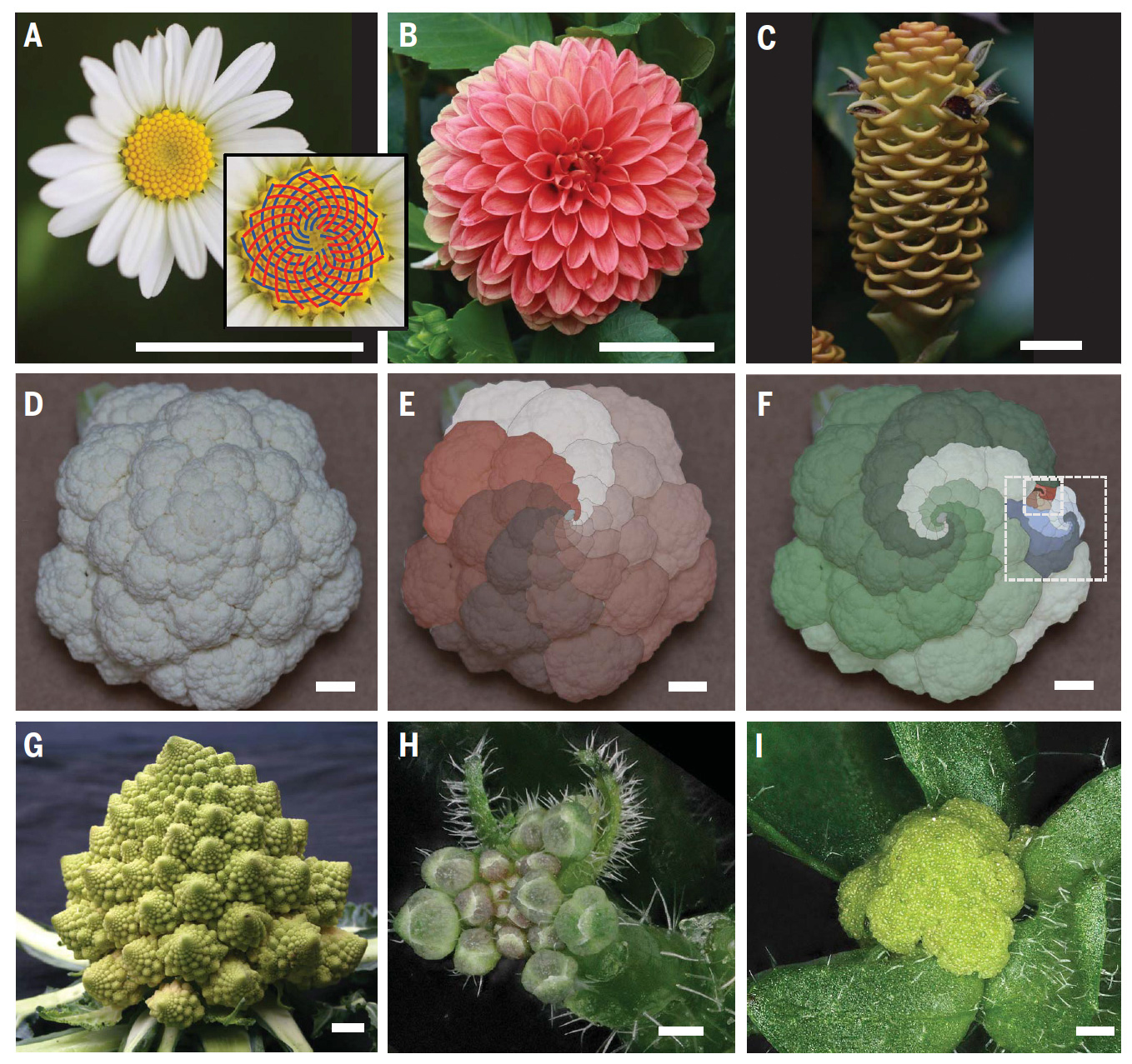博文
Science:花椰菜分形结构起因于开花基因网络的扰动
||
Cauliflower fractal forms arise from perturbations of floral gene networks
第一作者:Eugenio Azpeitia
第一单位:法国里昂大学
通讯作者:Francois Parcy
Abstract
背景回顾:Throughout development, plant meristems regularly produce organs in defined spiral, opposite, or whorl patterns. Cauliflowers present an unusual organ arrangement with a multitude of spirals nested over a wide range of scales.
提出问题:How such a fractal, self-similar organization emerges from developmental mechanisms has remained elusive.
结果1:Combining experimental analyses in an Arabidopsis thaliana cauliflower-like mutant with modeling, we found that curd self-similarity arises because the meristems fail to form flowers but keep the “memory” of their transient passage in a floral state.
结果2:Additional mutations affecting meristem growth can induce the production of conical structures reminiscent of the conspicuous fractal Romanesco shape.
结论:This study reveals how fractal-like forms may emerge from the combination of key, defined perturbations of floral developmental programs and growth dynamics.

摘 要
在整个发育过程中,植物的分生组织会以螺旋、对生或轮生的模式来形成规则分布的器官。花椰菜却呈现出一种不同寻常的器官排列方式,多个层级的许多螺旋状组织嵌套在一起。但是,这种分形、具有自相似特征的组织是如何通过发育形成的,这一问题至今仍不清楚。本文结合对拟南芥类似花椰菜突变体的实验分析和建模,结果发现这种自相似性特征是由于分生组织未能形成花组织,但仍保持了其向花过渡的短瞬“记忆”。额外的影响分生组织生长的突变会诱导锥形结构的产生,类似于典型的分形罗马花椰菜(Romanesco)形态。本文的研究揭示了植物中对花发育程序和生长动态的特定扰动,可能会导致分形类外形结构的形成。
通讯作者
** François Parcy **
个人简介:
1992-1995年,CRNS Délégation Ile-de-France Sud,博士。
研究方向:LEAFY和ARFs在花发育过程中的作用。
doi: https://doi.org/10.1126/science.abg5999
Journal: Science
Published date: July 09, 2021
https://blog.sciencenet.cn/blog-3158122-1294866.html
上一篇:Cell:拟南芥FLOE1感应水分胁迫,控制种子萌发
下一篇:Horticulture Research:火龙果基因组揭示其基因组演化和甜菜素生物合成调控
全部作者的其他最新博文
- • Plant Physiology:CsMADS3促进柑果中的叶绿素降解和类胡萝卜素合成(华中农业大学)
- • Molecular Plant:LBD11-ROS反馈调节作用于拟南芥的维管形成层增殖和次生生长(浦项科技大学)
- • Science Advances:根结线虫通过调控植物的CLE3-CLV1模块,促进侵染进程(日本熊本大学)
- • Nature Communications:油菜素内酯参与植物营养生长期转变的分子机制解析(浙江农林大学)
- • Current Biology:光合作用产生的蔗糖驱动侧根“生物钟”(德国弗莱堡大学)
- • PNAS:花同源异型基因在叶中被抑制、花中被激活的分子机制(南卡罗来纳大学)